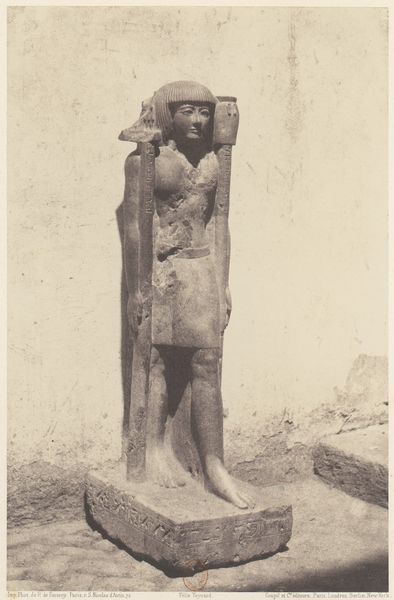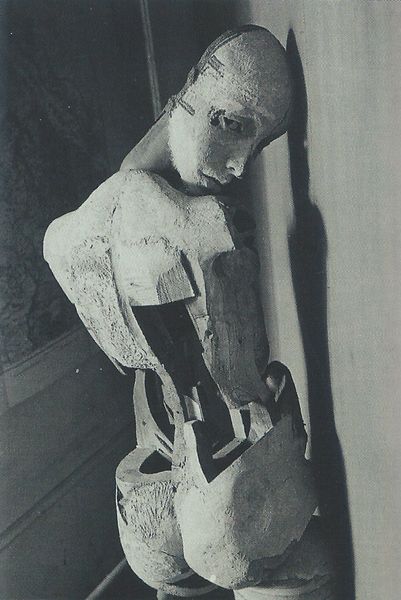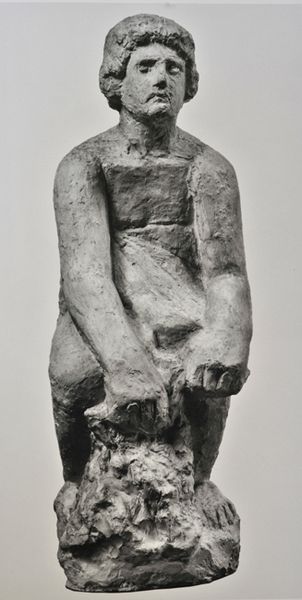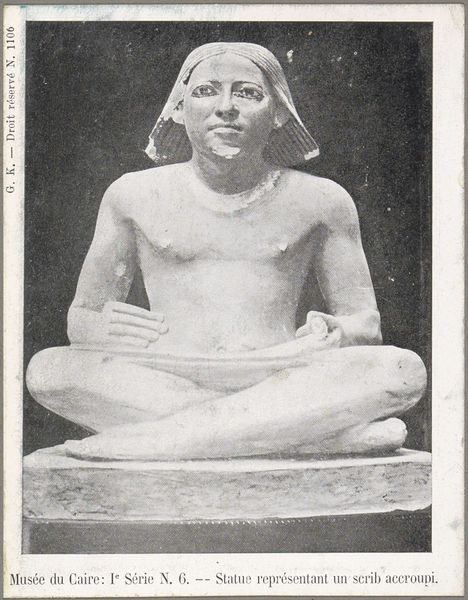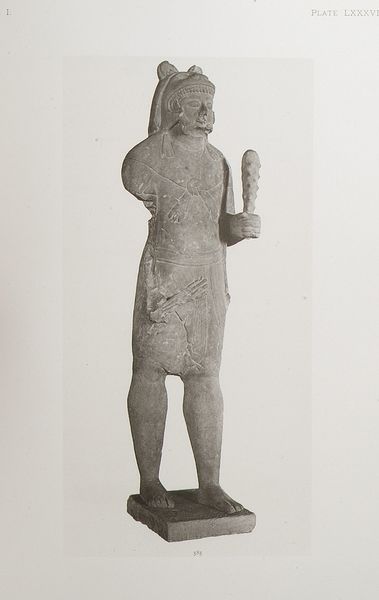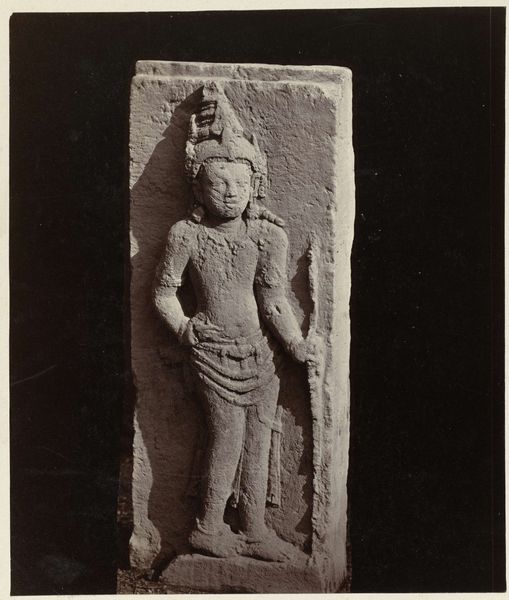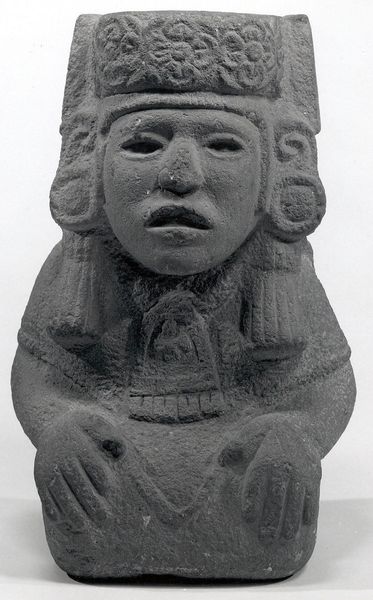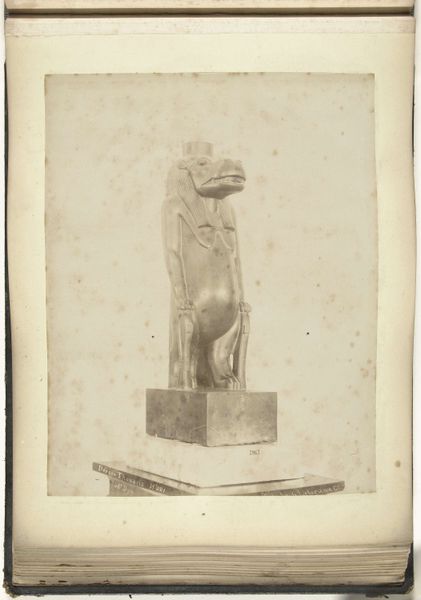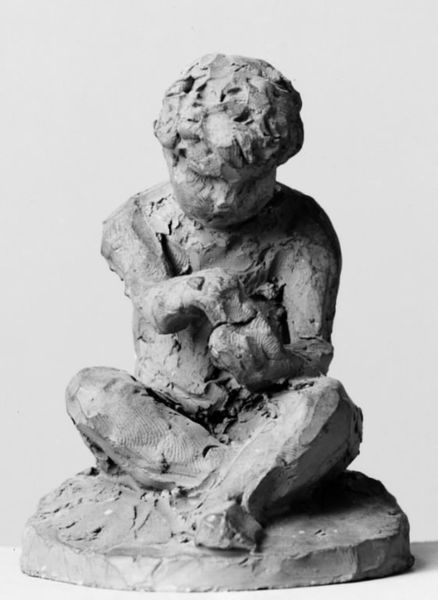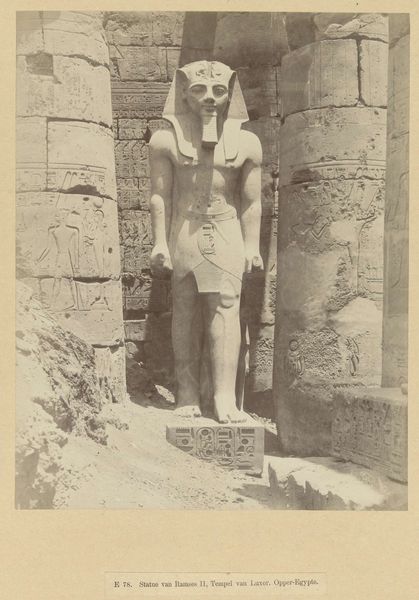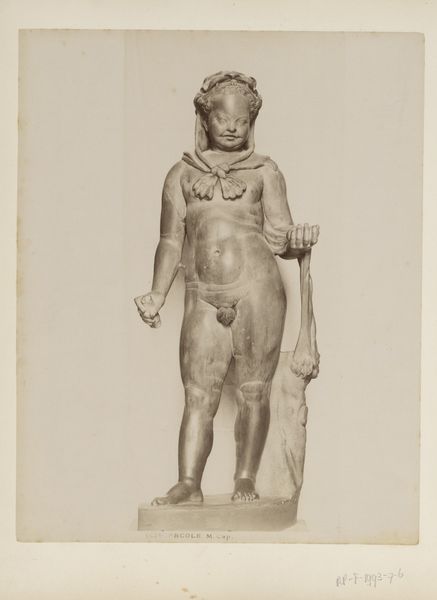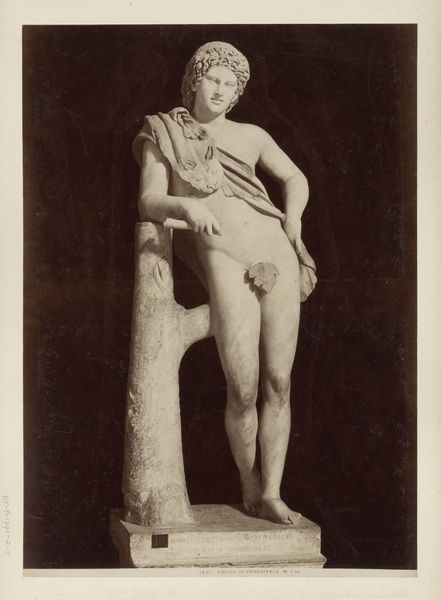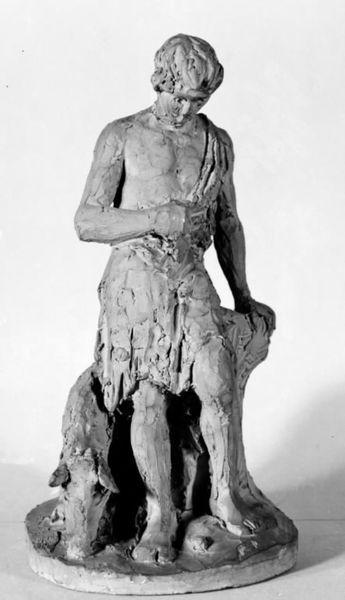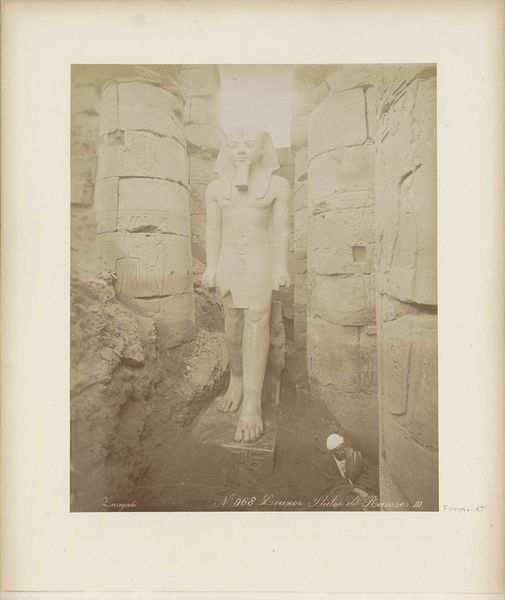
photography, sculpture
#
statue
#
ancient-egyptian-art
#
photography
#
historical photography
#
sculpture
#
19th century
#
history-painting
#
realism
#
statue
Dimensions: height 131 mm, width 73 mm
Copyright: Rijks Museum: Open Domain
This photograph captures a statue of a pharaoh, thought to be Ousirtas I, located in the Cairo Museum. Just looking at it, I think about process: how the statue was carved, the tools used, and the time it must have taken. The stark grayscale and the photographic texture emphasize the statue's material presence. The stone looks worn, you can see variations in tone. The artist, identified as GK, captured the statue’s surface, the subtle shifts in light that define the contours of the pharaoh's face and body. Look closely at his hands resting on his knees; each finger is individually rendered but the details soften at the edges. It’s like the statue is slowly dissolving back into stone. You know, this image makes me think about the photographs of ancient sculptures by Eugène Atget – both capture a sense of timelessness, an echo of history rendered through light and shadow. Art is always about this conversation across time, a dialogue between past and present, permanence and change.
Comments
No comments
Be the first to comment and join the conversation on the ultimate creative platform.
